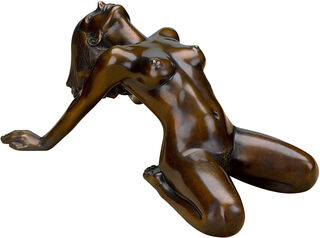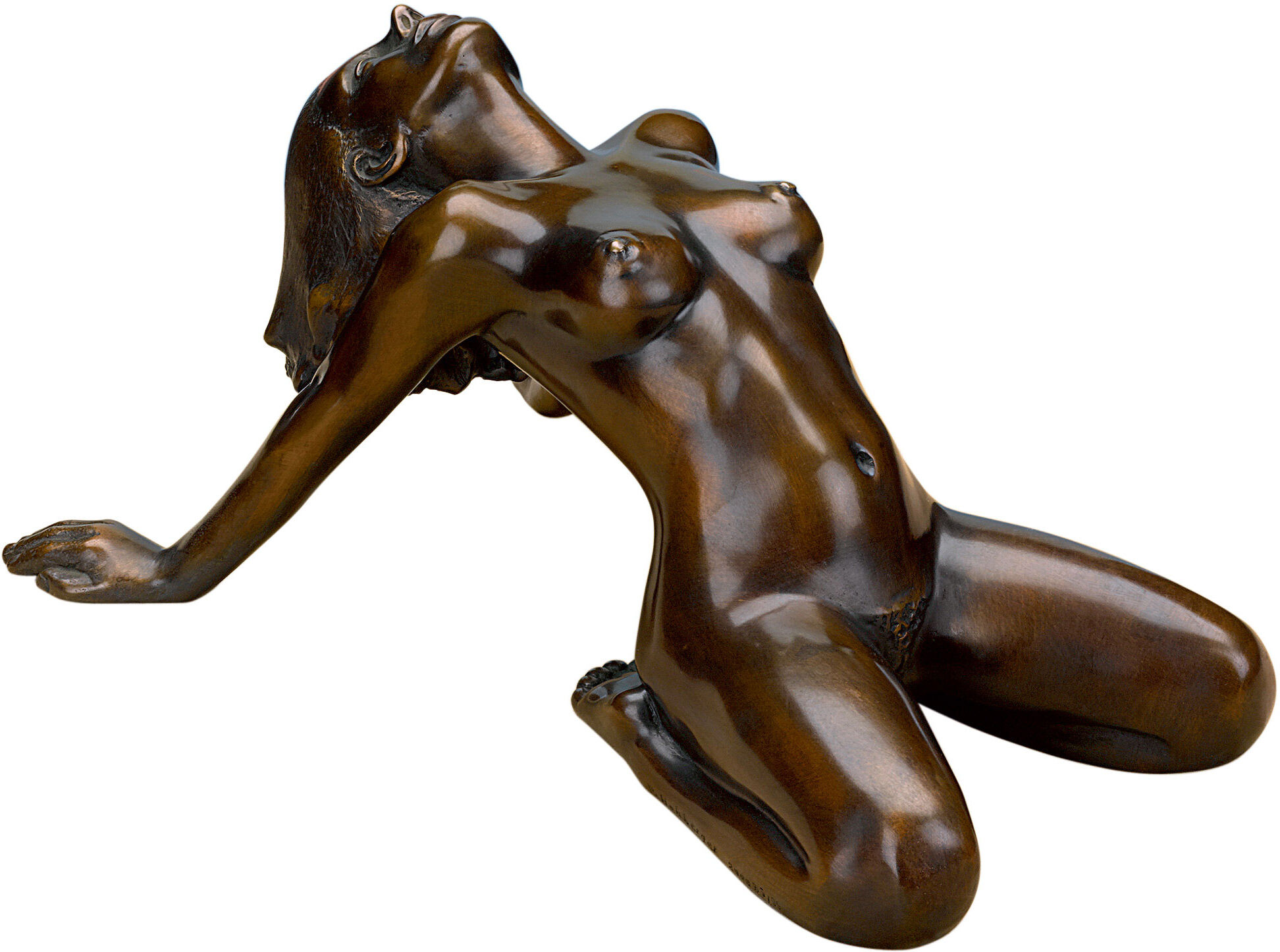Sculpture "Aglaea", bronze version
Sculpture "Aglaea", bronze version
Quick info
ars mundi Exclusive Edition | limited, 99 copies | numbered | signed | bronze | hand-patinated | -polished | size 34 x 18 x 23 cm (w/h/d) | weight approx. 5 kg
Detailed description
Sculpture "Aglaea", bronze version
Hohberger's sculpture "Aglaea" combines the myth of the Graces, who, as Charites, were the goddesses of grace in Greek mythology. "Aglaea" (= "the shining") was the hot-blooded wife of Vulcanus. According to the Greek conception, the Graces give life its true pleasures. In their company, there is always joy, joking and cheerfulness. Accompanied by Venus, Bacchus and Apollo, they ensure that the beloved becomes truly charming to the lover, the wife to the husband - and thus symbolise the joys of love par excellence.
Limited Original Editions in two versions. Size 34 x 18 x 23 cm (h/w/d). Edition in precious bronze. Cast using the Lost-Wax-Process, finely patinated and polished by hand. Limited edition of 99 copies, numbered and signed. Weight approx. 5 kg. Exclusively at ars mundi.
About Peter Hohberger
Born in 1939, former actor, now sculptor and painter
The sculptor Peter Hohberger, born in Silesia on 12 November 1939, was already involved in drawing and modelling as a child. After a successful career as an actor, he has devoted himself to painting and the fine arts for many years. He sees himself quite consciously as a sculptor in the classical sense.
His basic aesthetic understanding is influenced by nature. The beauty of the human body is what fascinates him and which he translates into his nudes and portrait busts unaffected by modernisms. His role models are the masters of ancient Greece, Auguste Rodin and above all Arno Breker, who instructed him personally. He has learned from all of them, and not only in the accuracy with which he knows how to depict the beauty of the female body.
Hohberger says: "Art that enriches life and makes people happy outlasts any kind of so-called zeitgeist".
An alloy of copper with other metals (especially with tin) used since ancient times.
When casting bronze, the artist usually applies the lost-wax technique which is dating back more than 5000 years. It's the best, but also the most complex method of producing sculptures.
First, the artist forms a model of his sculpture. It is embedded in a liquid silicone rubber mass. Once the material has solidified, the model is cut out. The liquid wax is poured into the negative mould. After cooling down, the wax cast is removed from the mould, provided with sprues and dipped into ceramic mass. The ceramic mass is hardened in a kiln, whereby the wax flows out (lost mould).
Now we finally have the negative form, into which the 1400° C hot molten bronze is poured. After the bronze had cooled down, the ceramic shell is broken off and the sculpture is revealed.
Now the sprues are removed, the surfaces are polished, patinated and numbered by the artist himself or, to his specifications, by a specialist. Thus, each casting becomes an original work.
For lower-quality bronze castings, the sand casting method is often used which, however, does not achieve the results of a more complex lost-wax technique in terms of surface characteristics and quality.
Graphic or sculpture edition that was initiated by ars mundi and is available only at ars mundi or at distribution partners licensed by ars mundi.
Term for an art object (sculpture, installation), which is produced in multiple copies in a limited and numbered edition according to the artist‘s will.
Artist's multiples have been called the most accessible and affordable art on the market.
A plastic work of sculptural art made of wood, stone, ivory, bronze or other metals.
While sculptures from wood, ivory or stone are made directly from the block of material, in bronze casting a working model is prepared at first. Usually, it is made of clay or other easily mouldable materials.
The prime time of sculpture after the Greek and Roman antiquity was the Renaissance. Impressionism gave a new impulse to the sculptural arts. Contemporary artists such as Jorg Immendorf, Andora, and Markus Lupertz also enriched sculptures with outstanding works.


